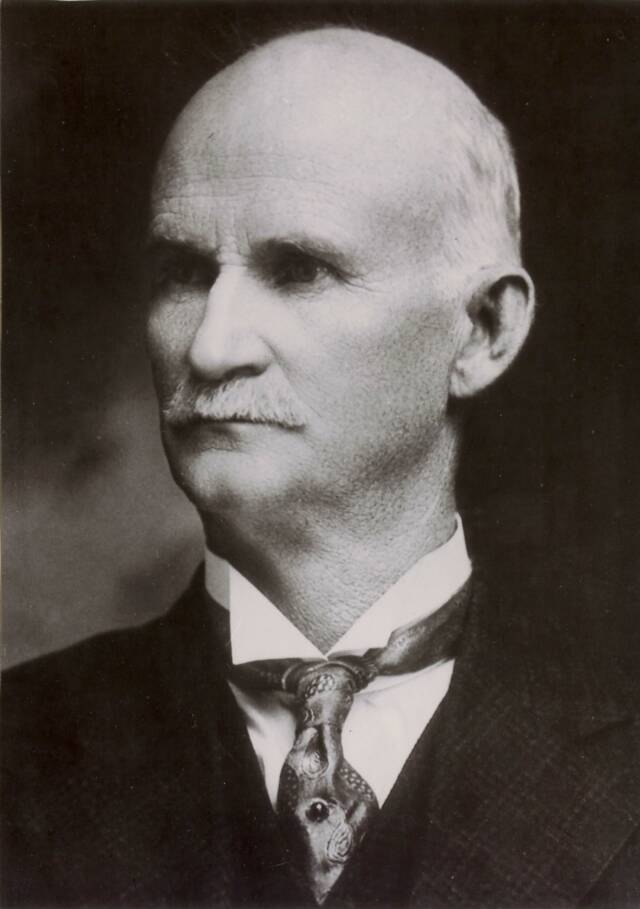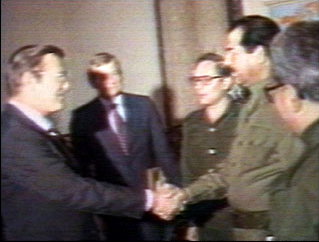|
Colt M1911A1
The Colt M1911 (also known as 1911, Colt 1911, Colt .45, or Colt Government in the case of Colt-produced models) is a single-action, recoil-operated, semi-automatic pistol chambered primarily for the .45 ACP cartridge. History Early history and adaptations The M1911 pistol originated in the late 1890s as the result of a search for a suitable self-loading (or semi-automatic) pistol to replace the variety of revolvers in service at the time. The United States was adopting new firearms at a phenomenal rate; several new pistols and two all-new service rifles ( M1892/96/98 Krag and M1895 Navy Lee), as well as a series of revolvers by Colt and Smith & Wesson for the Army and Navy, were adopted just in that decade. The next decade would see a similar pace, including the adoption of several more revolvers and an intensive search for a self-loading pistol that would culminate in the official adoption of the M1911 after the turn of the decade. Hiram S. Maxim had designed a self-lo ... [...More Info...] [...Related Items...] OR: [Wikipedia] [Google] [Baidu] |
Semi-automatic Pistol
A semi-automatic pistol (also called a self-loading pistol, autopistol, or autoloading pistol) is a repeating firearm, repeating handgun that automatically ejects and loads cartridge (firearms), cartridges in its chamber (firearms), chamber after every shot fired, but only one round of ammunition is fired each time the Trigger (firearms), trigger is pulled. The pistol's fire control group disconnects the trigger mechanism from the firing pin/striker until the trigger has been released and reset manually, unlike the self-cycled firing mechanism in machine pistol, fully automatic pistols. A semi-automatic pistol recycles part of the energy released by the propellant combustion to move its bolt (firearm), bolt, which is usually housed inside the pistol slide, slide. After a round of ammunition is fired, the spent cartridge casing is extracted and ejected as the slide/bolt moves rearwards under recoil, the hammer (firearms), hammer/striker is cocked by the slide/bolt movement, and a ... [...More Info...] [...Related Items...] OR: [Wikipedia] [Google] [Baidu] |
Cuban Revolution
The Cuban Revolution () was the military and political movement that overthrew the dictatorship of Fulgencio Batista, who had ruled Cuba from 1952 to 1959. The revolution began after the 1952 Cuban coup d'état, in which Batista overthrew the emerging Cuban democracy and consolidated power. Among those who opposed the coup was Fidel Castro, then a young lawyer, who initially tried to challenge the takeover through legal means in the Cuban courts. When these efforts failed, Fidel Castro and his brother Raúl Castro, Raúl led an armed Attack on the Moncada Barracks, assault on the Moncada Barracks, a Cuban military post, on 26 July 1953. Following the attack's failure, Fidel Castro and his co-conspirators were arrested and formed the 26th of July Movement (M-26-7) in detention. At his trial, Fidel Castro launched into a History Will Absolve Me, two-hour speech that won him national fame as he laid out his grievances against the Batista dictatorship. In an attempt to win pub ... [...More Info...] [...Related Items...] OR: [Wikipedia] [Google] [Baidu] |
War In Afghanistan (2001–present)
War in Afghanistan, Afghan war, or Afghan civil war may refer to: *Conquest of Afghanistan by Alexander the Great (330 BC – 327 BC), the conquest of Afghanistan by the Macedonian Empire * Muslim conquests of Afghanistan, a series of campaigns in the 7th, 8th, 9th, and 10th centuries * Mongol campaigns in Central Asia (1216–1222), the conquest of Afghanistan by the Mongol Empire * Mughal conquests in Afghanistan (1526), the conquest by the Mughal Empire * Afghan-Sikh Wars (1748–1837), intermittent wars between the Afghans and the Punjabis. * Afghan Civil War (1863–1869), a civil war between Sher Ali Khan and Mohammad Afzal Khan's faction after the death of Dost Mohammad Khan * Anglo−Afghan Wars, wars conducted by British India in Afghanistan ** First Anglo−Afghan War (1839–1842) ** Second Anglo−Afghan War (1878–1880) ** Third Anglo−Afghan War (1919) * Panjdeh incident (1885), an incursion into Afghanistan by the Russian Empire during the era of the "Great Game" * A ... [...More Info...] [...Related Items...] OR: [Wikipedia] [Google] [Baidu] |
Gulf War
, combatant2 = , commander1 = , commander2 = , strength1 = Over 950,000 soldiers3,113 tanks1,800 aircraft2,200 artillery systems , page = https://www.govinfo.gov/content/pkg/GAOREPORTS-PEMD-96-10/pdf/GAOREPORTS-PEMD-96-10.pdf , strength2 = 1,000,000+ soldiers (~600,000 in Kuwait)5,500 tanks700+ aircraft3,000 artillery systems , casualties1 = Total:13,488 Coalition:292 killed (147 killed by enemy action, 145 non-hostile deaths)776 wounded (467 wounded in action)31 tanks destroyed/disabled28 Bradley IFVs destroyed/damaged1 M113 APC destroyed2 British Warrior APCs destroyed1 artillery piece destroyed75 aircraft destroyedKuwait:420 killed 12,000 captured ≈200 tanks destroyed/captured 850+ other armored vehicles destroyed/captured 57 aircraft lost 8 aircraft captured (Mirage F1s) 17 ships sunk, 6 captured. Acig.org. Retrieved on 12 June 2011 , casualties2 = Total:175,000–300,000+ Iraqi:20,000–50,000 killed ... [...More Info...] [...Related Items...] OR: [Wikipedia] [Google] [Baidu] |
Salvadoran Civil War
The Salvadoran Civil War () was a twelve-year civil war in El Salvador that was fought between the government of El Salvador, backed by the United States, and the Farabundo Martí National Liberation Front (FMLN), a coalition of left-wing guerilla groups backed by Cuba, Cuba under Fidel Castro as well as the Soviet Union. A 1979 Salvadoran coup d'état, coup on 15 October 1979 followed by government killings of anti-coup protesters is widely seen as the start of civil war. The war did not formally end until after the Dissolution of the Soviet Union, collapse of the Soviet Union, when, on 16 January 1992 the Chapultepec Peace Accords were signed in Mexico City. The United Nations (UN) reports that the war killed more than 75,000 people between 1979 and 1992, along with approximately 8,000 disappeared persons. Human rights violations, particularly the kidnapping, torture, and murder of suspected FMLN sympathizers by state security forces and paramilitary death squads – were per ... [...More Info...] [...Related Items...] OR: [Wikipedia] [Google] [Baidu] |
Lebanese Civil War
The Lebanese Civil War ( ) was a multifaceted armed conflict that took place from 1975 to 1990. It resulted in an estimated 150,000 fatalities and led to the exodus of almost one million people from Lebanon. The religious diversity of the Lebanese people played a notable role in the lead-up to and during the conflict: Lebanese Christians and Lebanese Sunni Muslims comprised the majority in the coastal cities; Lebanese Shia Muslims were primarily based throughout southern Lebanon and in the Beqaa Valley in the east; and Lebanese Druze, Druze and Christians populated the country's mountainous areas. At the time, the Lebanese government was under the influence of elites within the Maronite Christian community. The link between politics and religion was reinforced under the Greater Lebanon, French Mandate from 1920 to 1943, and the country's parliamentary structure favoured a leading position for Lebanese Christians, who constituted the majority of the population. However, Leban ... [...More Info...] [...Related Items...] OR: [Wikipedia] [Google] [Baidu] |
Falklands War
The Falklands War () was a ten-week undeclared war between Argentina and the United Kingdom in 1982 over two British Overseas Territories, British dependent territories in the South Atlantic: the Falkland Islands and Falkland Islands Dependencies, its territorial dependency, South Georgia and the South Sandwich Islands. The conflict began on 2 April 1982, when 1982 invasion of the Falkland Islands, Argentina invaded and Occupation of the Falkland Islands, occupied the Falkland Islands, followed by the invasion of South Georgia the next day. On 5 April, the British government dispatched a British naval forces in the Falklands War, naval task force to engage the Argentine Navy and Argentine Air Force, Air Force before making an Amphibious warfare, amphibious assault on the islands. The conflict lasted 74 days and ended with an Argentine Argentinian surrender in the Falklands War, surrender on 14 June, returning the islands to British control. In total, 649&nbs ... [...More Info...] [...Related Items...] OR: [Wikipedia] [Google] [Baidu] |
Iran–Iraq War
The Iran–Iraq War, also known as the First Gulf War, was an armed conflict between Iran and Iraq that lasted from September 1980 to August 1988. Active hostilities began with the Iraqi invasion of Iran and lasted for nearly eight years, until the acceptance of United Nations Security Council Resolution 598 by both sides. Iraq's primary rationale for the attack against Iran cited the need to prevent Ruhollah Khomeini—who had spearheaded the Iranian revolution in 1979—from exporting the new Iranian ideology to Iraq. There were also fears among the Iraqi leadership of Saddam Hussein that Iran, a theocratic state with a population predominantly composed of Shia Muslims, would exploit sectarian tensions in Iraq by rallying Iraq's Shia majority against the Baʽathist government, which was officially secular but dominated by Sunni Muslims. Iraq also wished to replace Iran as the power player in the Persian Gulf, which was not seen as an achievable objective prior to the Is ... [...More Info...] [...Related Items...] OR: [Wikipedia] [Google] [Baidu] |
Sino-Vietnamese War
The Sino-Vietnamese War (also known by other names) was a brief conflict that occurred in early 1979 between China and Vietnam. China launched an offensive ostensibly in response to Vietnam's invasion and occupation of Cambodia in 1978, which ended the rule of the Chinese-backed Khmer Rouge. The conflict lasted for about a month, with China withdrawing its troops in March 1979. In February 1979, Chinese forces launched a surprise invasion of northern Vietnam and quickly captured several cities near the border. On 6March of that year, China declared that its punitive mission had been accomplished. Chinese troops then withdrew from Vietnam. Vietnam continued to occupy Cambodia until 1989, suggesting that China failed to achieve one of its stated aims of dissuading Vietnam from involvement in Cambodia. China's operation at least forced Vietnam to withdraw the 2nd Corps, from the invasion forces of Cambodia to reinforce the defense of Hanoi. Additionally, it demonstrated that th ... [...More Info...] [...Related Items...] OR: [Wikipedia] [Google] [Baidu] |
Cambodian–Vietnamese War
The Cambodian–Vietnamese War was an armed conflict between Democratic Kampuchea, controlled by Pol Pot's Khmer Rouge, and the Vietnam, Socialist Republic of Vietnam. It began in December 1978, with a Vietnamese invasion of Cambodia which toppled the Khmer Rouge and ended in 1989 with the withdrawal of Vietnamese forces from Cambodia. The war was preceded by years of conflict between Vietnam and the Khmer Rouge, including numerous massacres by the Khmer Rouge, notably the Ba Chúc massacre of over 3,000 Vietnamese civilians in April 1978. On 21 December 1978, the Vietnamese launched a limited offensive towards the town of Kratié (town), Kratie.Morris, p. 111 On 23 December 1978, 10 out of 19 divisions of the Khmer Rouge's Kampuchea Revolutionary Army opened fire along the border with Vietnam with the goal of invading the southwestern border provinces of Đồng Tháp province, Đồng Tháp, An Giang province, An Giang and Kiên Giang province, Kiên Giang. On 25 December 19 ... [...More Info...] [...Related Items...] OR: [Wikipedia] [Google] [Baidu] |
Cambodian Civil War
The Cambodian Civil War (, Romanization of Khmer#UNGEGN, UNGEGN: ) was a civil war in Cambodia fought between the Communist Party of Kampuchea (known as the Khmer Rouge, supported by North Vietnam and China) against the government of the Kingdom of Cambodia (1953–1970), Kingdom of Cambodia and, after October 1970, the Khmer Republic, which had succeeded the kingdom after a coup (both supported by the United States and South Vietnam). The conflict was part of the Indochina Wars, Second Indochina War (1955–1975). The conflict was linked to the Vietnam War. The North Vietnamese People's Army of Vietnam (PAVN) was involved to protect its bases in eastern Cambodia, which were crucial to its military effort in South Vietnam. This presence was initially tolerated by Prince Norodom Sihanouk, Sihanouk, the Cambodian head of state, but domestic resistance combined with China and North Vietnam aiding the anti-government Khmer Rouge caused him to request help from the Soviet Union ... [...More Info...] [...Related Items...] OR: [Wikipedia] [Google] [Baidu] |
Rhodesian Bush War
The Rhodesian Bush War, also known as the Rhodesian Civil War, Second as well as the Zimbabwe War of Independence, was a civil conflict from July 1964 to December 1979 in the List of states with limited recognition, unrecognised country U.D.I. Republic of Rhodesia (later the temporary British colony of Zimbabwe-Rhodesia and now independent Zimbabwe). The conflict pitted three forces against one another: the Rhodesian white minority-led government of Ian Smith (later the Zimbabwe-Rhodesian government of Bishop Abel Muzorewa); and militant African guerillas organisations such as Zimbabwe African National Liberation Army, the military wing of Robert Mugabe's Zimbabwe African National Union; and the Zimbabwe People's Revolutionary Army of Joshua Nkomo's Zimbabwe African People's Union. The war and its subsequent Internal Settlement, signed in 1978 by Smith and Muzorewa, led to the implementation of universal suffrage in June 1979 and the end of Minoritarianism, white minority rule ... [...More Info...] [...Related Items...] OR: [Wikipedia] [Google] [Baidu] |








